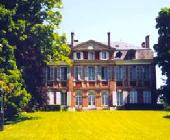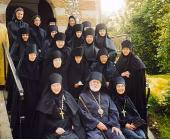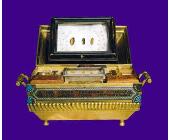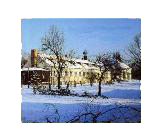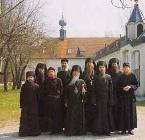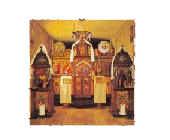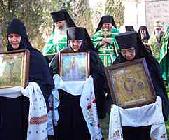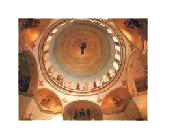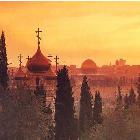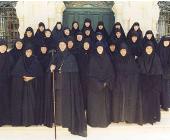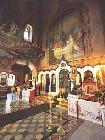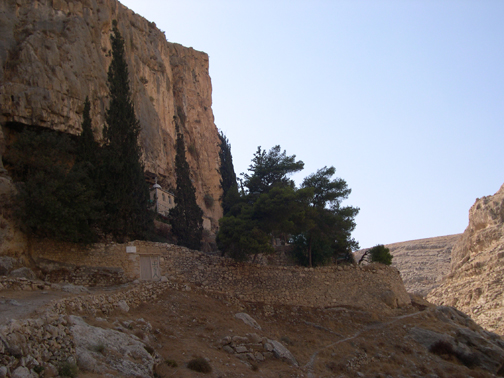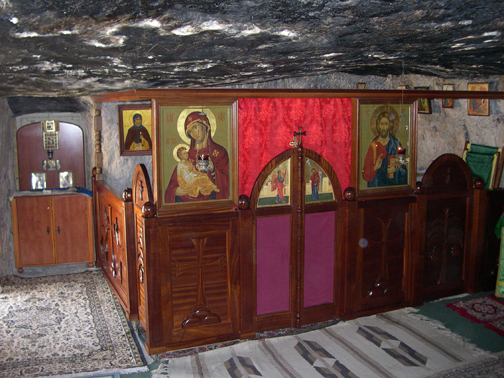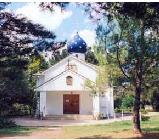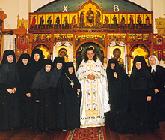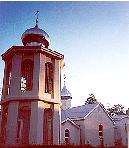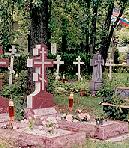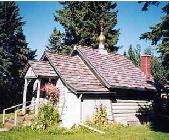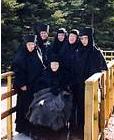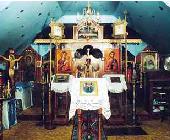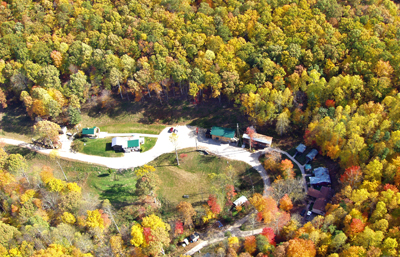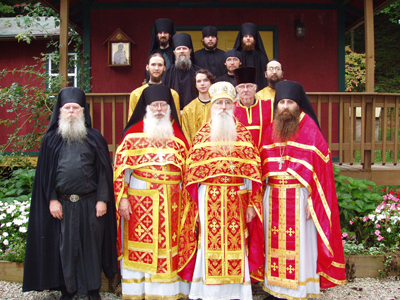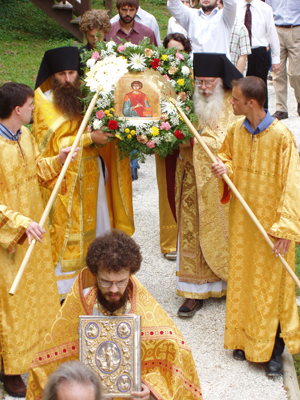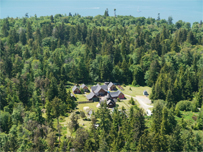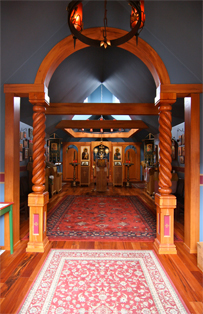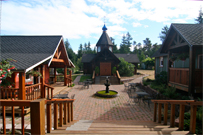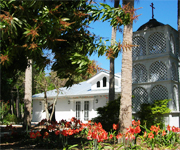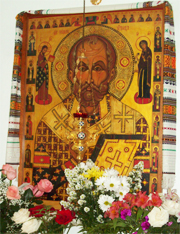Don't listen to the narrative -- UNITY IS OUR GREATEST STRENGTH, NOT DIVERSITY! AMERICA FIRST! SECURE THE BORDER! STOP THE WARS!
Translate
Showing posts with label Jesus Christ. Show all posts
Showing posts with label Jesus Christ. Show all posts
Saturday, June 01, 2013
" The Lost Gospels " An Excellent Documentary From BBC 4
This is by far one of the best mainstream documentaries on the Nag Hammadi & other Gnostic books that I have yet to come across. The host is an Anglican priest, but he is far from a closed minded Christian, unlike many other's in high-church Christology. I love reading about the different scts of early Christianity & hope to one day be able to visit the Holy Land. m//r
Sunday, May 26, 2013
" Jesus In Kashmir (India) " Documentary by the Indian Government--
Here we have for your consideration, another documentary, this time produced & released by the Indian govt, about Jesus either surviving His crucifixion & travelling to India, China, Asia, etc, OR Jesus Christ going to India et al, between the ages of 12 & 30. I like this narrators voice and the background music. It's really easy to listen to. Soothing, yes....that's the word. So if you have some time, play this video in the background while you do whatever it is you have to do. Or spend some time attentively watching this documentary. But if you're anything like me you're doing five things at one time!
Ahhhh, spread some nice vibes today....show someone you don't like, some love. We don't always like all the people we come in contact with, but we should strive to love them. ♥
Friday, May 24, 2013
" Christianity Was In India 2000 yrs Ago " Great Theories Here--
Listen up! This is an excellent documentary proposing that Jesus Christ, Son of God, spent several years of His life in the areas of China, India, Tibet, Nepal, etc. Learning & teaching with different sages & mystics & "wise-men." There ARE many, many people who earnestly believe that Jesus did some extensive traveling between the ages of 12 & 30. I'm not saying He did or didn't go to these countries. But I do love watching these kinds of stories & reading books on this subject. I am a Catholic Christian who goes to Mass every Sunday, but I refuse to be closed-minded about other people's beliefs & views or stories such as this. Check it out for yourself & make up your own mind. Follow your heart. Always use love.
Sunday, January 20, 2013
Currently Reading--
"Gnosticism: New Lights on the Ancient Tradition of Inner Knowing"
--by Stephen A. Hoeller
"Papa Dimitri Gagastathis, The Man of God (1902-1975)"
--translated by Dimitrios N. Kagaris
"The Monks of Mount Athos"
--translated by Rosemary Edmonds
Friday, November 09, 2012
Wednesday, November 07, 2012
Saturday, June 16, 2012
Tuesday, April 03, 2012
♥♥♥ Life of St. Thekla ♥♥♥
♥♥♥Life of St. Thekla♥♥♥
The Life of St. Thekla, (also spelled Thecla) a disciple and companion of the Apostle Paul in 1st century. She is given the title "Equal-to-the-Apostles" because she accompanied St. Paul in founding churches because her witness converted so many others to Christ, and she was the first woman martyr for the Christian Faith.
Life of
SAINT THEKLA
SAINT THEKLA
 According to ancient Syrian and Greek manuscripts, Saint Thekla was born into a prosperous pagan family in the Lycaonian city of Iconium (present-day Konya in south-central Turkey) in A.D. 16. When she was 18 years old and betrothed to a young man named Thamyris, Saint Paul the Apostle and Saint Barnabas arrived in Iconium from Antioch (Acts 14). Thekla’s mother Theokleia prohibited her from joining the crowds which gathered to hear Paul preach. But Thekla found that if she sat near her bedroom window she could hear his every word. Thekla sat there for three days and three nights listening to Paul preach the word of God. She was particularly touched by his call to chastity. As it became apparent that Thekla was becoming interested in the new Faith, Theokleia and Thamyris went to the governor of the city and complained about Paul and his preaching. To pacify them and the other outraged citizens of Iconium, the governor had Paul imprisoned to await trial.
According to ancient Syrian and Greek manuscripts, Saint Thekla was born into a prosperous pagan family in the Lycaonian city of Iconium (present-day Konya in south-central Turkey) in A.D. 16. When she was 18 years old and betrothed to a young man named Thamyris, Saint Paul the Apostle and Saint Barnabas arrived in Iconium from Antioch (Acts 14). Thekla’s mother Theokleia prohibited her from joining the crowds which gathered to hear Paul preach. But Thekla found that if she sat near her bedroom window she could hear his every word. Thekla sat there for three days and three nights listening to Paul preach the word of God. She was particularly touched by his call to chastity. As it became apparent that Thekla was becoming interested in the new Faith, Theokleia and Thamyris went to the governor of the city and complained about Paul and his preaching. To pacify them and the other outraged citizens of Iconium, the governor had Paul imprisoned to await trial.When Thekla learned of Paul’s arrest she secretly went to the prison, and using her golden bracelets to bribe the guard, gained admittance to his cell. When she saw the Apostle she knelt before him and kissed the chains which bound his hands and feet. She remained there a long time listening to his message of the Good News of Jesus Christ.
Being concerned at Thekla’s prolonged absence, Theokleia and Thamyris asked her servant if she knew where she was. The servant said that Thekla had gone to visit an imprisoned stranger. Theokleia and Thamyris knew at once that she was with Paul. They decided to go again to the governor, this time demanding immediate judgement for the Apostle. After the governor chastened Paul for the disturbances he had caused in the city, he had him stoned and expelled from Iconium. The governor then admonished Thekla for her foolishness and commanded her to return home with her mother and fiancé. When Thekla announced that she had vowed to remain a virgin for the sake of Christ, her mother became enraged and asked the governor to threaten Thekla with severe punishment. The governor complied with this wish and ruled that Thekla was to be burned at the stake unless she renounced her faith in Christ.
When Thekla refused to renounce her Heavenly Bridegroom, she was taken to the arena for punishment. As she was tied to the stake she saw a vision of Jesus Christ which gave her strength to face the flames. The fire was lit, but as the flames came near Thekla a thunderstorm suddenly arose and a great torrent of rain and hail came down from heaven and extinguished the flames. Embarrassed because his plan had failed, the angry governor released Thekla but commanded that she must leave Iconium at once.
Upon her release, Thekla went to the outskirts of the city where she rejoined Paul. She told him of her trial and miraculous escape from punishment and asked for baptism. Paul refused to baptize Thekla, saying that this would be accomplished in God’s own way and time. Paul and Thekla then departed from the region of Iconium and traveled to Antioch in Syria. As they were entering the city a young nobleman named Alexander saw Thekla. Being entranced by her beauty he rushed forward and tried to seduce her, but Thekla fought him off, thus disgracing him in front of his crowd of friends. Alexander went to the governor of Antioch and complained that this wandering girl had disgraced him, a nobleman, in public. He demanded that she be punished with death. The governor complied and ruled that Thekla would face the wild beasts in the arena. Thekla’s only reply was that she be allowed to preserve her virginity unto death. Her wish was granted and she was given into the care of the noblewoman Tryphaena, a relative of Caesar, until the time of punishment.
When Thekla was taken to the arena, a lioness was set free to attack her. But to the astonishment of the crowd, the lioness approached the Saint and sat tamely at her feet. A bear was then released, but as it came close to Thekla the lioness rose up to defend her and killed the bear. A large lion was then released. The lioness again came to Thekla’s defense killing the lion, but losing her own life also. Then all the cages were opened and a large number of wild animals charged at the defenseless Thekla. After crossing herself and praying for courage, the Saint noticed a large tank of water which was nearby, containing the aquatic animals. She climbed into the water, asking that she might be baptized by Christ as she did so. Seeing that the beasts were unable to harm Thekla, Alexander asked that the Saint be given over to him for punishment. He tied her to two large bulls in the hopes that they would pull her asunder. But when the bulls charged off in opposite directions, the ropes which held Thekla to them were miraculously loosened and she was spared. Seeing that no harm could be done to Thekla, the authorities released her. She went to the home of Tryphaena where she remained for eight days preaching the Good News of Jesus Christ and converting Tryphaena and her entire household. When she departed from Antioch, Tryphaena gave her a treasure in gold and precious jewels.
After she left Antioch, Thekla journeyed to Myra where she rejoined Paul. She informed him of all that had occurred, including her baptism and asked that she might be permitted to spend the remainder of her life as an ascetic. Paul gave her his blessing and she departed, leaving with Paul all the gold and jewels that Tryphaena had given her so that he might distribute them among the poor and needy.
Thekla then traveled again to Syria where she went up into the mountains for a life of prayer and solitude. Many years later a young pagan found her praying in an isolated canyon and resolved to harass her and spoil her virginity. As he approached her and blocked her only exit to safety, she prayed that her Bridegroom would protect her as He had so many times in the past. At that moment the canyon wall was miraculously split allowing her to escape through a narrow crack in the rock.
Saint Thekla continued her life of asceticism and then peacefully fell asleep in Christ at the age of 90. Shortly after her death a community of virgins went to live in her mountain cell, building a small chapel to enshrine her body. This Convent of Saint Thekla still exists today near the village of Ma‘loula, Syria.
Because of her many sufferings for the Faith the Church counts her as a “Protomartyr”. And because she converted so many people to Christianity she is also know as an “Equal-to-the-Apostles”.
Holy Saint Thekla, pray unto God for us!
O Glorious Thekla, companion of Paul the divine, thou wast inflamed with the love of thy Creator. By the teaching of the divine Preacher thou didst despise the passing earthly pleasures and offered thyself to God as an acceptable and pleasing sacrifice, disregarding all suffering. Intercede with Christ, thy Bridegroom, to grant us his great mercy.Commemorated on September 24
Troparion (Tone 4) –
You were enlightened by the words of Paul, O Bride of God, Thekla,Kontakion (Tone 8) -
And your faith was confirmed by Peter, O Chosen One of God.
You became the first sufferer and martyr among women,
By entering into the flames as into a place of gladness.
For when you accepted the Cross of Christ,
The demonic powers were frightened away.
O all-praised One, intercede before Christ God that our souls may be saved.
O glorious Thekla, virginity was your splendor,
The crown of martyrdom your adornment and the faith you trust!
You turned a burning fire into refreshing dew,
And with your prayers appeased pagan fury, O First Woman Martyr!
Wednesday, March 28, 2012
† ROCOR Monasteries Worldwide †

The Lord God blessed the Russian Diaspora to have many monasteries and monastic communities. Some of them moved in their entirety from Russia, for example, Lesna Convent; others became the heirs of the tradition of old Russian monasteries, especially of Pochaev and Valaam; the third kind were established entirely in the New World. The list below is not comprehensive: it does not include all the monastic communities of the Russian Orthodox Church Outside of Russia, but only the main ones.
| |||
Holy Trinity Stavropighial Monastery in Jordanville
The monastery was established in 1930 by Archimandrite Panteleimon. The present Superior is Archimandrite Luke (Murianka). The main church was dedicated to the Holy Trinity; the lower church in honor of St. Job of Pochaev; the cemetery church in honor of the Dormition of the Most-Holy Mother of God, and the church on the lake in honor of the Holy New Martyrs of Russia and of St. John of Rylsk. The Monastery includes a publishing house of St. Job of Pochaev, an icon-painting studio, the Holy Trinity Seminary, a library, a Russian cemetery and a historical museum.
The main holy object of the Monastery is the copy of the Pochaev Icon of the Mother of God. In the cemetery are buried Metropolitans Anastassy and Philaret of blessed memory, Archbishops Tikhon (Troitsky), Appolinarii, Averkii (Taushev), Anthony (Medvedev), Hegumen Filimon of Valaam, the icon-painter Archimandrite Kyprian and the murdered protector of the Myrrh-Streaming Iveron Icon of the Mother of God, brother Joseph. P.O. Box 36 Jordanville, NY 13361-0036, USA Tel: (315) 858-0940; fax: (315) 858-0505 | |||
Lesna Convent of the Most-Holy Mother of God
Provemont, France
The Convent was established in 1885 at the behest of Archbishop Leontii of Warsaw. The first abbess came to Lesna from Moscow along with five nuns. In 1889 the monastic community was reorganized into a general monastery and had town churches in St. Petersburg, Kholma, Warsaw and Yalta. The nuns taught children and the Convent became a center of Orthodoxy outside of Russia. The Royal Family visited the Convent twice. St. Amvrosii of Optina and St. John of Kronstadt were supporters of the Convent. In 1915, the Convent was evacuated into the depths of Russia—all 500 nunsand over 600 others. In 1917, at the invitation of then-Bishop Anastassy (Gribanovsky), the Convent moved to the Kishinev Diocese, and then to Yugoslavia, to Khopovo. From Khopovo, in 1950, the nuns of the Convent left for France (first to Fourquet, then to Provemont), where they remain to this day. In France, the Convent was frequently visited by St. John of Shanghai and San Francisco the Miracle-worker. The main holy object of the convent is the Lesna Icon of the Mother of God. There also are the relics of St. Afanasii of Brest. The nuns bear a multitude of obediences: singing, cleaning, gardening, candle-making, icon-painting, a bookstore, and also warmly greet many visiting pilgrims.
COUVENT DE LESNA
1, rue du Moulin Provemont, 27150 Etrepagny, FRANCE Tel: 33 (2) 32 55 82 66; fax: 33 (2) 32 27 31 75 | |||
Monastery of St. Job of Pochaev, Munich, Germany
The origins of this monastery arose from the Pochaev Lavra. In 1923, the archimandrite of the Pochaev Lavra Vitaly (Maximenko) exported the historical typography of the Lavra to the Carpathian Mountins. There the monastery of St. Job, from 1924 until 1944, furnished all of the Russian Diaspora with service books and spiritual literature. When in 1944, Soviet forces neared the Carpathian monastery, a large portion of the monks left for Germany, then to Switzerland, and finally to Jordanville. Those monks who did not depart for America, along with new novices and monks, gathered around Archimandrite Job in Germany, near Munich. The monastery went through several phases in connection with the decline of monastic life. In 1981, accompanied by the move to the monastery of the ruling bishop of the German Diocese, it has been renewed.
The head of the monastery is Archbishop Mark of Berlin and Germany. The monks manage a variety of obediences: church singing, cleaning, candle-making and publishing.
KLOSTER DES HL. HIOB Hofbauernstr. 26 81247 Muenchen, GERMANY Tel: 49 (89) 834 89 59; fax: 49 (89) 88 67 77 | |||
Mount of Olives Ascension Convent
The plot of land upon which our convent is located was acquired by archimandrite Anthony (Kapoustin) at the end of the 19th c. In 1906 the Convent was recognized by the Holy Synod of the Russian Orthodox Church, and the number of nuns there quickly grew. During the First World War, Jerusalem was declared a war zone and the clergy was expelled. Only in 1919 did the clergy return and the church unsealed. All the care over the preservation of the convent was assumed by the Russian Orthodox Church Outside of Russia. At the convent, besides the Church of the Ascension, are a chapel of St. John the Forerunner and the trapeza church in honor of St. Philaret the Merciful.
The head of the Convent is Abbess Moisseia. The nuns assume many obediences: church singing, cleaning, embroidery in gold and greeting pilgrims.
RUSSIAN CONVENT ON MT. OF OLIVES P.O. Box 19229 Jerusalem 91191, ISRAEL Tel: 972 (2) 628-43-73; Fax: 972 (2) 628-23-67 | |||
Gethsemane Convent, the Church of St. Mary Magdalene
The Church of St. Mary Magdalene was built by Emperor Alexander III in 1888 in memory of his mother. Around this church in Gethsemane Garden in 1934, with the blessing of Metropolitan Anastassy (Gribanovsky), a small monastic community of nuns formed. Some of the nuns established a school in Bethany for Arab girls. Gradually it became possible to organize daily services in Gethsemane and to strengthen monastic life there. The Church of St. Mary Magdalene contains the relics of Grand Duchess Elizabeth Feodorovna the New Martyr and of St. Varvara.
The head of the Convent is Abbess Elizabeth. The nuns have many obediences:
ST. MARY MAGDALENE CONVENT singing, cleaning, tending to children and greeting visitors. P.O. Box 19238 Jerusalem 91191, ISRAEL Tel: 972 (2) 628-43-71; fax: 972 (2) 628-63-81 | |||
Wadi Fara: the Skete of St. Chariton
The Lavra of St. Chariton was the first in the Holy Land. The founder of the monastery in the beginning of the IV c. was St. Chariton the Witness. Now on the place of the lavra is a small men's skete with a cave church. The Skete is under the auspices of the Russian Ecclesiastical Mission in Jerusalem.
THE RUSSIAN ECCLESIASTICAL MISSION IN JERUSALEM P.O. Box 20164 Jerusalem 91200, ISRAEL Tel: 972 (2) 992-88-95 | |||
Russian Orthodox Convent of Our Lady of Kazan "Novoye Shamarino," Australia
The Convent was founded in 1956. With the arrival from China of an enormous number of refugees, including those in monastic orders, a piece of land was purchased and a monastic building and church were built upon it. Mostly elderly nuns settled there. It seemed that the Convent would die out, but in 1980 a stream of youn novices began to join. In 1983 a new church was built in honor of the Kazan Icon of the Mother of God, along with housing. An old-age home was build alongside the Convent with a Russian library.
Nuns perform their obedience by singing, in the garden and in tending to the elderly.
OUR LADY OF KAZAN CONVENT 32 Smith Road Kentlyn, N.S.W. 2560, AUSTRALIA Tel: 61 (2) 4625-7054 | |||
Monastery of St. Edward the Martyr, England

In 1979, Archimandrite Alexei, an Englishman by birth, received a blessing from the Synod of Bishops of the Russian Orthodox Church Outside of Russia to receive the relics of the martyred King Edward and to erect a proper home for them. King Edward, in many ways similar to SS Boris and Gleb the Martyrs, was cruelly martyred in the Xth c. In 1982, a small brotherhood settled at a cemetery in the city of Brookwood, and gradually turned the old Anglican church into an Orthodox one. This church now contains the relics of St. Edward. The Brotherhood conducts services in English, Greek and Church Slavonic and primarily serves the needs of those newly converted to Orthodoxy among the English, and also publishes a journal, The Shepherd.
ST. EDWARDS BROTHERHOOD St. Cyprian's Avenue Brookwood, Woking, Surrey GU24 OBL, ENGLAND Tel: 44 (1483) 487 763; e-mail: theshepherd@mac.com | |||
Stavropighial Convent of the Dormition, "Novo Diveevo"
The Convent is located some 60 km from New York City. The founder and builder of this monastery was Protopresbyter Andrian Rimarenko (starets Nektarii of Optina died under his epitrachelion). In 1949, with the arrival in America of a multitude of refugees, Fr. Adrian decided that it was necessary to have a spiritual center. A former Roman Catholic monastery was built and a Russian convent was founded. Soon after an Orthodox church was built in honor of St. Seraphim of Sarov. The largest Russian Orthodox cemetery is located at the site along with a home for the aged. The convent has many sacred things: a full-length portrait of St. Seraphim of Sarov painted during his lifetime, a cross from the Ipatiev House and the cell icon of the Mother of God that belonged to St. Amvrosii of Optina.
The head of the Convent is Abbess Irina.
RUSSIAN ORTHODOX CONVENT "NOVO DIVEEVO" 100 Smith Road Nanuet, NY 10954, U.S.A. Tel: (845) 356-0425; fax: (845) 356-8250 | |||
New Kursk-Root Icon Hermitage, Mahopac, NY
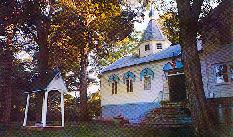
In 1949, some 60 km from New York city a plot of land was purchased for the establishment of a church and summer residence for the First Hierarch of the Russian Orthodox Church Outside of Russia. It was given the name iNew Kursk-Root Hermitage,i in honor of the old Kursk-Root hermitage destroyed by the bolsheviks, where the Miracle-working Kursk-Root Icon was found. A small monastic community grew at the site, which held several Councils. At the present time only a priest and some workers live there.
The Synodal Candle Factory is housed on the property.
RUSSIAN ORTHODOX MONASTERY 1050 Route 6 Mahopac, NY 10541, U.S.A. Tel: (914) 628-4975 | |||
Convent of the Protection of the Mother of God, Bluffton, Canada
At first, in 1953, the Convent was a skete of the Convent of Our Lady of Vladimir in San Francisco. It is located in the far north of the Province of Alberta. Subsequently, due to the decline of monasticism in the Vladimir Convent, the property was handed over to the Diocesan Administration of the Canadian Diocese, and in 1980 a monastic community, now independent, was formed. The Convent has a winter and summer church and a cemetery. There has been a recent influx of young novices.
The head of the Convent is Abbess Amvrosia.
HOLY VIRGIN PROTECTION CONVENT RR #2 Bluffton, AB T0C 0M0, CANADA Tel: (403) 843-6401 | |||
Annunciation Convent in London, England
The Convent was established in 1954 with the blessing of St. John of Shanghai and San Francisco the Miracle-worker for spiritual education. The Convent had its origins in the Holy Land. The head of the Convent with a group of nuns was forced to undergo a barrage of bullets while fleeing their monastery near Jerusalem during the Arab-Israeli war of 1948. The nuns suffered great need, illness and misfortune in their exile for 6 years, until, following 2 years of warm hospitality at Lesna Convent in France, Divine Providence brought them to England.
HOLY ANNUNCIATION CONVENT 26 Brondesbury Park London NW6 7DL, ENGLAND Tel: 44 (181) 459 02 63 | |||
Transfiguration of the Savior Skete, Bombala, Australia
This small monastic community is located in the mountains of Australia. The Skete was founded with the blessing of Archbishop Paul (Pavlov) in 1982. One of the main goals of the Skete is the spiritual nourishment of pilgrims. Not far from the Transfiguration Skete the Presentation Convent was established. The head of the Convent is Abbess Anna.
The head of the Transfiguration Skete is Archimandrite Aleksei.
HOLY TRANSFIGURATION MONASTERY Richardson's Road Bombala, N.S.W. 2632, AUSTRALIA Tel: 61 (2) 6458 3009 | |||
Holy Cross Skete, West Virginia, USA
The Hermitage of the Holy Cross is an English speaking monastic community of the Russian Orthodox Church outside of Russia. The Brotherhood currently includes eight monks, three novices, and candidates for the novitiate.
The Hermitage was founded in 1986 in House Springs Missouri by Hieromonk Kallistos (+1992). After Fr. Kallistos reposed in the Lord, the monastery was accepted as a spiritual dependency of Holy Trinity Monastery in Jordanville, NY. In May of 2000 the community was moved to a rural property in West Virginia. Archimandrite George of Jordanville acts as the spiritual father for the community, which is headed by Hieromonk Seraphim. The brotherhood supports itself through the production of church incense, liturgical chant recordings, soap products, hand-painted icons, and the sale of books and other church goods.
Hermitage of the Holy Cross
RR 2 Box 2343 Wayne, WV 25570-9755 USA Phone - (304)849-2072 Fax - (304)849-2016 www.holycross-hermitage.com/ | |||
Convent of St. Elizabeth, near Jordanville
The Convent was established in the 1980s and attempts to follow the monastic order of SS Martha and Maria in Moscow. The nuns sew vestments, paint icons, and prepare candles and incense.
The head of the Convent is nun Ioanna.
COMMUNITY OF ST. ELIZABETH 1520 State Rte 167 Mohawk, NY 13407, U.S.A. Tel: (315) 858-2208 | |||
All-Merciful Saviour Monastery
English-speaking brotherhood. The Abbot is Igumen Tryphon. All-Merciful Saviour Monastery P.O. Box 2420 Vashon Island, WA 98070-2420, USA Tel: (206) 463-5918 Website: http://www.vashonmonks.com/ | |||
CONVENT OF NATIVITY OF THE VIRGIN MARY
Wayne, WV CONVENT OF NATIVITY OF THE VIRGIN MARY P.O. Box 698 Wayne, WV 25570-0698, USA | |||
MONASTERY OF ARCHANGEL MICHAEL
Tel: (304) 849-4697
Superior of the community: Hieromonk Kosma
P.O. Box 554
Marrickville, N.S.W. 2204 Australia | |||
PRESENTATION SISTERHOOD
Bungarby, NSW, Australia
Superior of the community: Abbess Anna. PRESENTATION SISTERHOOD Rennie's Road Bungarby, N.S.W. 2630, AUSTRALIA Tel: 61 (2) 6453-6272 | |||
SAINT NICHOLAS MONASTERY
Saint Nicholas Monastery is a female monastic community of the Russian Orthodox Church Outside of Russia. The Monastery chapel is dedicated to the Holy Prophet and God-seer Moses. The nuns speak English and Spanish, with Liturgical services celebrated mainly in English and Slavonic. Of the many sacred treasures with which the Monastery is blessed are sacred relics of the Precious Cross of our Lord Jesus Christ, the Veil of the Mother of God, Saint Nicholas, the Holy Apostles, and others. The Archimandrite John Memorial Library houses more than 10,000 volumes. Obediences include iconography, sewing, receiving pilgrims, candle making, library cataloging, and operating a Monastery bookstore. The head of the Monastery is Abbess Andrea
1340 Piney RoadNorth Fort Myers, FL 33903 U.S.A. Tel: 239-997-2847 |
Subscribe to:
Posts (Atom)



